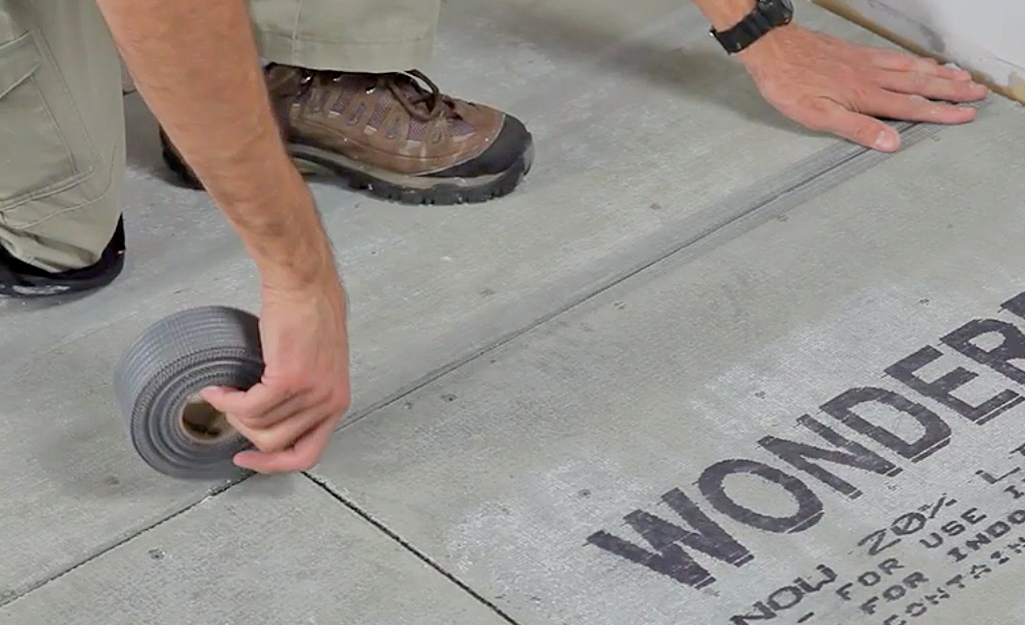
- #Install cement board over hardwood floor how to
- #Install cement board over hardwood floor cracked
- #Install cement board over hardwood floor full
- #Install cement board over hardwood floor crack
In your case, I would look at all available options that would give you the look you want, without a true tile installation.
#Install cement board over hardwood floor cracked
After a few months there were interesting lines where the floor cracked directly over every joint in the subfloor. I have seen a job where a DIYer tiled directly over a single layer layer of subfloor in a new home. Once installed, it stiffens the floor to prevent flex and it "decouples" the subfloor movement from the tile. This material is installed so that the joints are offset from the subfloor joints below. In a proper tile install, this subfloor gets another layer of material, such as 1/2" cement board, Hardie board, or even a high grade 1/2" plywood. For example, a plywood subfloor in a new home can shrink to the point that joints that were originally tight can open up to 1/8 to 3/16th gaps.
#Install cement board over hardwood floor crack
they provide stiffness, so the tile and the grout do not crack as the floor flexes, and they provide a "decoupling" membrane, that isolates the movement of the subfloor from telegraphing through the tile. Sanding it down, and tiling directly over it will be nothing but a disaster. Hardwood flooring is typically not a suitable substrate for tile installation, since it's surprisingly unstable, as in, it moves a huge amount based on everything from humidity, temperature, foot traffic, etc. Any gaps large enough to jamb a pencil eraser into must be filled first (if you are using large tiles (≥8" per side) for small tiles (≤2") you don't want any gaps larger than ~1/16").

My approach (assuming the hardwood was level) would be to run a floor sander over them then tile directly onto the wood floor and call it a day. You *could* lay down plywood on top of your hardwood floors, BUT that will involve screwing it into the hardwood floors anyway, so either way you will "screw up" the underlying hardwood floors. Pergo IMO is not a good sub-surface, so that needs to come up regardless. You can tile directly over your existing wood floods but you'll want to run a sander over them first to ensure adhesion. To address your question - the most important thing when laying tile is that your subsurface is flat and uniform. You should never lay a new floor over a subfloor that has issues that have not been resolved.Quote from: nereo on September 19, 2017, 07:17:24 AM I suggest posting this on the John Bridge forum - which is dedicated to tile installation. You must also check that the floor is clean and clear from debris and is completely flat - otherwise you may have issues with the floor after installation. We recommend either Sika Primer MB, a two-component solvent free, low viscosity epoxy primer or Sikabond Rapid DPM, a one-component, low viscosity epoxy primer which dries in approximately 45mins. In this instance a surface damp proof membrane can be applied to help address the issue. On average, a concrete slab takes a month per inch to dry out, and in many cases the ideal moisture and humidity percentages are very difficult to obtain. Ideally you should aim for a reading of 35-40% air humidity and/or 2-3% moisture content in the concrete.

If your concrete subfloor has been recently laid, you may well face a potential problem when it comes to moisture. You must ensure that the subfloor you are laying onto is prepared properly for installation. Those nails are then covered when you insert the next plank as the groove locks with the tongue. Using nails means installing them carefully so they are hidden from view when the floor is finished by putting them through the tongue of the planks. Nailed – Until the invention of strong adhesives, nailing was the common way to secure solid wood flooring.A glued floor feels as solid as a nailed floor underfoot, and can handle the contractions of the wood thanks to the flexibility of the glue. We recommend Sikabond 54 wood flooring adhesive for this purpose.
#Install cement board over hardwood floor full
To glue a wooden floor, a full coverage of flexible wood adhesive must be applied to the sub-floor and the boards.

#Install cement board over hardwood floor how to
How To Lay Solid Wood Flooring Over A Concrete Subfloor Solid wood flooring is made from one single piece of wood, and can be highly sensitive to changes in temperature and humidity as this can cause the wood to expand and contract. The installation process is slightly different for each, but by following the correct steps it can be done without any problems. Both solid wood flooring and engineered wood flooring can be laid onto a concrete subfloor.


 0 kommentar(er)
0 kommentar(er)
